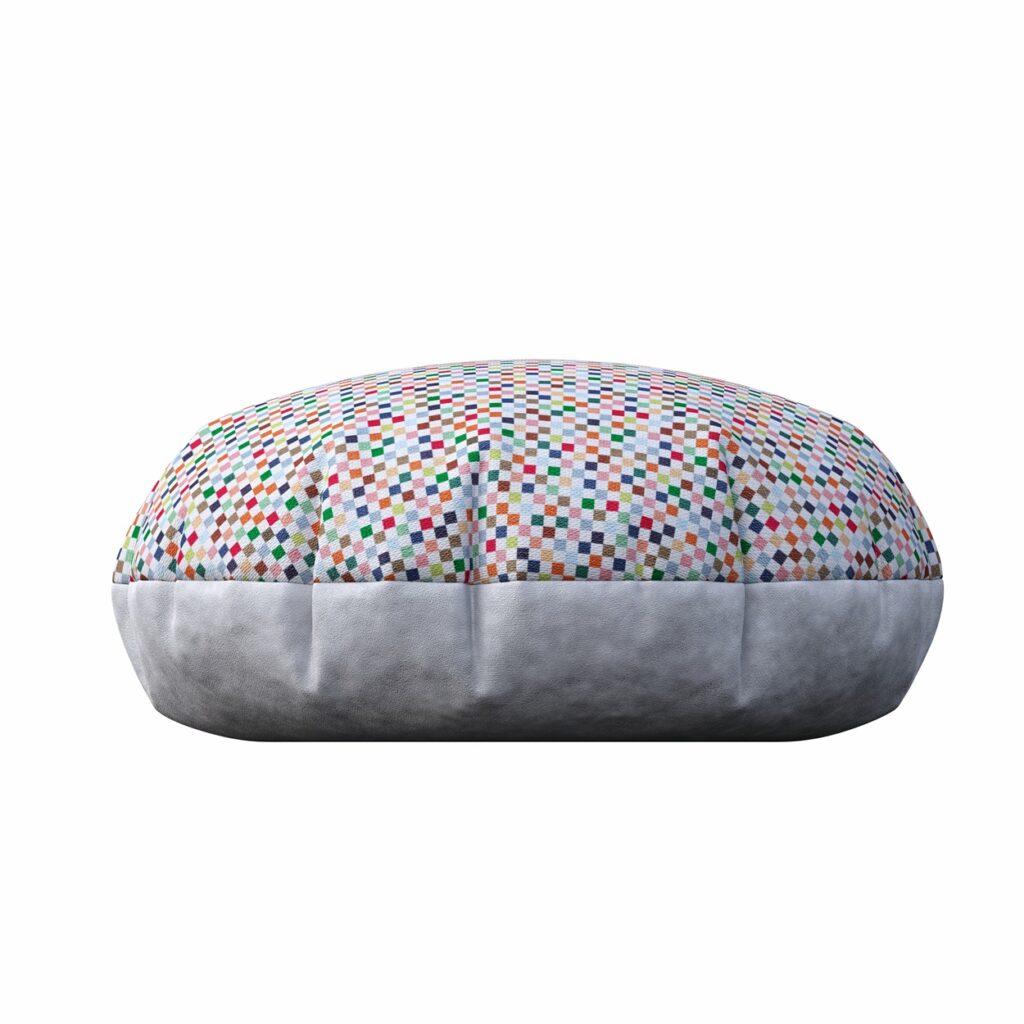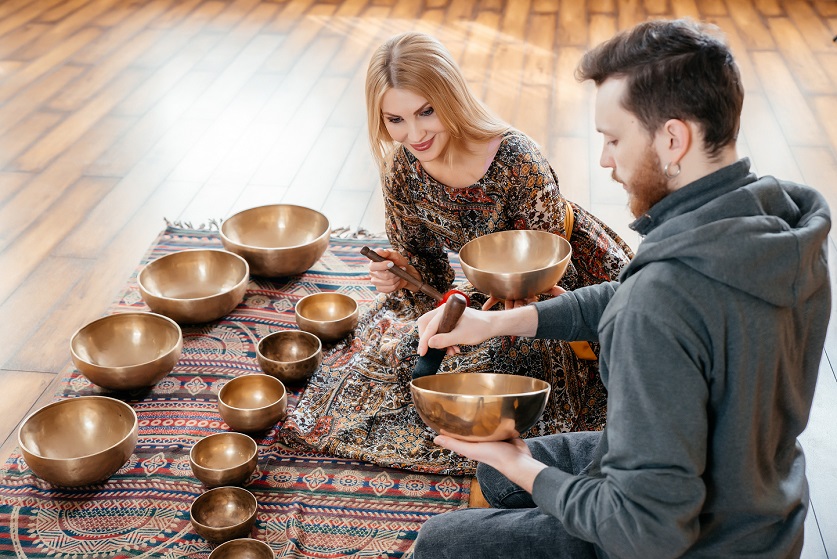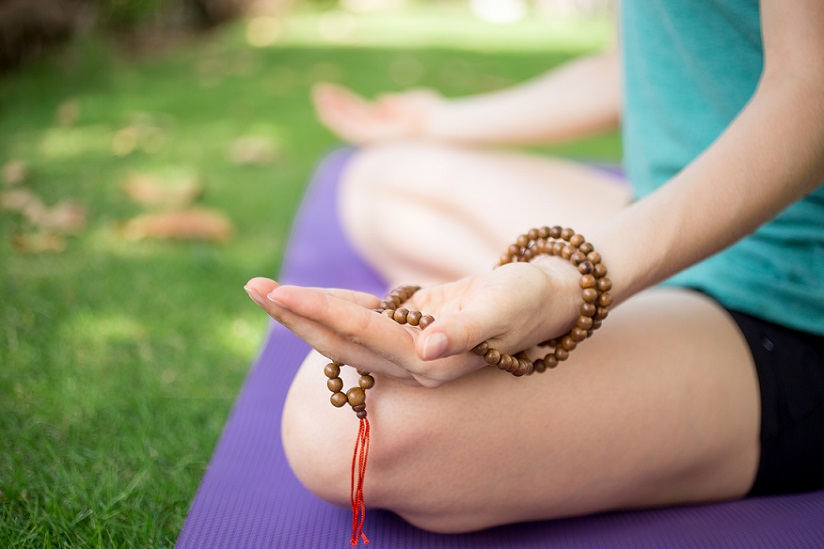Meditation Tools And Supplies:
In an ever-accelerating world, filled with growing complexities, the necessity for effective stress management and the pursuit of inner tranquility has never been more pronounced. Recent global events, most notably the COVID-19 pandemic, have further amplified the need to address collective stress and anxiety. Such extraordinary times underscore the critical role of maintaining mental and emotional health. This blog delves into various meditation tools and supplies, shedding light on how they can significantly contribute to mindfulness practices and aid in fostering a more stress-free state of being.
While some individuals naturally adapt to changes, regardless of their nature, others find it more challenging to cope with such shifts, especially when they are sudden or disruptive. The pandemic, with its myriad of social, economic, and health impacts, has been a test of resilience and adaptability for many.

Related Article: What Is Mindfulness: Journey from Core to Complexity
If you find yourself struggling to alleviate stress, to stay present, and to keep worries about the past or future at bay, adopting certain practices might be beneficial for you. Meditation, a time-honored practice with roots in various cultures and traditions, has gained widespread recognition for its effectiveness in reducing stress, improving focus, and enhancing overall well-being.
Meditation is not just a mental exercise; it often involves a set of tools and supplies that can enhance the experience. These tools are designed to create an environment conducive to relaxation and focus, and can be especially helpful for beginners or those who find it challenging to meditate in a typical home setting.
More on Meditation:
Meditation stands as a unique form of alternative therapy, primarily due to its ability to foster an enhanced state of awareness – a kind of cultivated attentiveness. This practice is specifically designed to offer practitioners a clearer, more present-minded perspective.
At its core, meditation is about mastering the art of processing emotions and feelings, and eventually, gaining a deeper understanding of them. This process is aimed at managing these internal experiences in a way that minimizes stress on both the mind and body.
Here is an interesting article published on the Washington Post about how meditation not only reduces stress, but changes your brain!
Moving forward, we’ll delve into various well-known tools and supplies commonly utilized by practitioners to enhance their meditation experience.
Is it essential to have these tools? Not exactly. But, if you’re interested in refreshing your usual meditation routine or keen on investing in resources to deepen your practice, these items might be worth exploring.
Meditation might seem straightforward at a glance, yet it often requires profound focus, as it involves retraining your mind. The right tools and supplies can significantly ease this process, not only mentally but also by providing physical comfort during your practice.
Meditation Tools And Supplies:
Meditation tools are known to aid you in your sessions in a number of ways. Most crucially, though, they improve your ability to focus and remain present and calm. This is certainly helpful if you’re looking to meditate for more extended periods of time, or have found it difficult to focus or re-focus your attention.
Meditation Cushions:
Meditation cushions are a popular tool that can aid in some of your beginner techniques and even in more advanced practice. Many meditation programs are done sitting down (on the floor vs. a chair). Oftentimes, in a lotus pose or with legs crossed. Indeed, having a cushion can add to you comfort during prolonged sessions.

Positioning can be crucial to help you focus your mind, let alone for comfort on a hard floor. Many practitioners work with there spine straight and erect, oftentimes requiring your pelvic region to slightly shift forward. This is where meditation cushions can help.
Meditation cushions ease this discomfort and help to create a more ideal environment for your body as you sink into your session. When your body is more relaxed, your mind will follow suit.
Remember, it’s important to do your homework. Meditation cushions vary greatly in size, shape, fabric, and other features. Before investing in one, experiment with pillows or cushions you already have at home. This will help you identify what feels comfortable and what doesn’t, and further evaluate the kind of cushion that suits you best. Consider factors like:
- Firmness: Do you prefer a firm support or a softer cushion?
- Height: Would you benefit from a low-profile cushion or one that is more elevated?
Understanding your preferences in these aspects will guide you in choosing the right meditation cushion for your needs.
This process can be very individualized. Keep in mind in certain cultures like Ancient Chinese and even modern-day Asia, many individuals grow-up in an environment where many of there chores are completed sitting on mats. Sometimes, making them more more accustomed to certain positions, so it’s okay if you’re not comfortable at first, meditation cushions can aid in that relief.
Tibetan Singing Bowls:
While meditation cushions are often a popular choice among beginners, they are not the only beneficial tool you can incorporate into your practice. Tibetan singing bowls are another valuable item to consider. Despite seeming like they might be suited for more advanced meditation, singing bowls are actually widely used by beginners as well. Their resonant sounds can significantly enhance the meditation experience for practitioners at any level.
Related Article: Sound Healing Platforms: The Resonance of Modern Wellness

Bowls, often including Tibetan bells, utilize auditory sensations as a key aid in meditation. The sounds produced by these tools are designed to foster a sense of calm and assist in focusing on the present moment.
These bowls boast a lengthy and significant history in both meditation practices and Tibetan culture. They are crafted to facilitate healing and mental purification during meditation sessions. Known for producing deep, resonant, and melodious tones, these bowls are also commonly referred to as Himalayan bowls. Their use in meditation is revered for the profound sense of tranquility they can instill.
We have discussed in previous blog posts, sound meditation or the use of sound therapy to help with mood, anxiety, and even pain intensities. A study of the use of Tibetan singing bowls in 62 men and women, produced results where participants reported less tension, anger, fatigue and depressed mood.
Another study using Himalayan singing bowls and effect on stress and heart rate variability, found that Tibetan bowls can be a tool leveraged to help increase parasympathetic tone (relaxation response), and reduce stress.
Some people conclude it is the vibrations and sounds that impact the mind-body and or brain waves to increase relaxation efforts.
One study published in the American Journal of Health Promotion found similar results as the above study. Hence, suggesting that Himalayan singing bowls enhanced blood pressure and heart rate responses, in particular, when added to directed relaxation sessions.
Meditation Apps:
Meditation apps (like what you may find with the Mindfulness.com app) are an accessible and simple meditation tool for anyone to begin using. They are both versatile and help walk you through the process, especially for individuals completely new to the practice. Guided meditation sessions and information about meditation, can be crucial for practitioners to reach there goals, more effectively.
There is also a growing body of research behind the use of meditation apps and specific meditation apps like “Calm” and “Headspace“. You can access one of these apps on any phone or smart device. They make mediation easy, and some say, more enjoyable.
One study on the Calm App was conducted on efficacy of mindfulness meditation delivery via the app for college students stress. The study concluded that the app was an “effective modality to deliver this form of meditation to reduce stress and improve mindfulness and self-compassion in stressed college students”.
A randomized control trial was also conducted on mindfulness training though digital mediums. This study found smart phone apps to be an effective delivery medium for mindfulness training.
The increasing popularity of meditation and mindfulness apps is not just due to their effectiveness but also because of the convenience they offer. Indeed, the top-tier apps do come with a cost, but they eliminate the need for live sessions that often require paying individual instructors. Additionally, these apps provide a wealth of information about the practice, all consolidated in one central, easily accessible location – right at your fingertips. This ease of access and comprehensive resource availability make these apps a highly appealing option for many seeking to learn and practice meditation and mindfulness.
You can get meditation music, bells, chimes, and even meditation timers. More complex apps, offer a wider variety of features.
You also have the option to participate in live meditation classes, seek guidance from a teacher or coach, monitor your meditation habits, and even engage with a community of fellow meditators. The opportunities provided by these modern meditation tools are vast and varied, opening up numerous avenues to enhance and diversify your meditation experience.
Meditation Music
If you prefer to avoid the potential complications and expenses associated with mobile or digital apps, or other high-priced meditation supplies, we highly recommend exploring the use of meditation music. This can be found in physical format in stores, but for a more contemporary approach, meditation music is readily available for download on your phone, or can be streamed on platforms like YouTube. It’s also often featured in meditation apps, should you choose to use them.
Meditation music is available in various styles and forms, all of which are designed to be calming. It plays a key role in reducing strain or stress and helps to focus the mind during meditation sessions, making it an excellent tool for enhancing the overall meditation experience.
Sound therapy and or using music for stress relief has more extensive studies in recent years. Studies have suggested that music impacts the psychobiological stress system. Thus, resulting in faster recovery times from stressors. An article posted on Stanford News, discusses rhythmic music’s potential at changing brain function, which you can read more about here.
Meditation Books: Empowering Your Practice with Knowledge
In the world of meditation, the tools and supplies extend beyond the physical aspects used during practice. Equipping yourself with knowledge about meditation can profoundly enhance your practice even before you begin. While learning from teachers and participating in class sessions are valuable methods, they might not always align with everyone’s schedule or learning style.
For those unable to commit to in-person learning, a wealth of books and online resources are available to broaden your understanding of meditation. These resources can be invaluable in providing deeper insights and techniques, ensuring that when you do sit down to meditate, you’re well-prepared and informed, setting the stage for a more effective and rewarding session.
When selecting meditation literature or articles, it’s crucial to choose those that align with your current experience level and goals. Whether you’re a beginner seeking foundational knowledge or an experienced practitioner looking to deepen your practice, there’s a vast array of material tailored to meet a diverse range of needs and aspirations. This targeted approach to learning ensures that the information you acquire is relevant and beneficial, empowering your meditation journey with informed understanding and practice.
Keep in mind there are several different forms of meditation, like transcendental, sound bath, Zen meditation, yoga meditation, body scan meditation, and more.
Meditation Beads
Meditation beads, also known as malas, are another useful meditation tool and a type of prayer bead. These beads come from the Buddhist tradition of meditation and are implemented during mantras or prayers. Typically, there are one-hundred and eight beads on each mala. Each bead represents a mantra. Today, it is common practice to use them for mediation, without religious affiliation.

Meditation beads, commonly known as malas, serve as a valuable tool in the practice of meditation. Originating from the Buddhist tradition, these prayer beads are traditionally used in mantra recitation or prayers. Here are some key aspects of malas and their use in meditation:
- Structure of Malas: Typically, a mala consists of 108 beads, with each bead representing a mantra. This specific number holds spiritual significance in various traditions.
- Secular and Spiritual Uses: While rooted in religious practice, malas are now widely used in secular meditation practices as well. They serve as a tactile aid to enhance focus and mindfulness, regardless of religious affiliation.
- Mantra Recitation Aid: For those who chant mantras, malas provide a practical way to keep track of repetitions, aiding in concentration and devotion during meditation.
- Focusing the Mind: Malas can be used to re-center and maintain focus during meditation. Some practitioners glide their fingers over each bead as a method to stay grounded and present.
- Breath Control: Incorporating malas into breath work, where each bead corresponds to a breath, can be a method for controlling and deepening breathing during meditation.
- Material Significance: Malas are crafted from a variety of materials, ranging from coral and stone to other unique mediums. Each material brings its own energy and aesthetic to the mala.
- Personal Connection: It’s essential for a mala to resonate with the individual using it. Factors like the feel of the beads, visual appeal, and the personal significance of the materials contribute to the mala’s effectiveness in meditation.
- Individual Selection: Choosing the right mala is a personal journey. Some malas may suit one individual better than another, based on personal preferences and the energy they bring.
In essence, malas are more than just meditation accessories; they are personal tools that can significantly enhance the meditation experience. Whether used for mantra recitation, breath work, or simply as a means to stay grounded, these beads play a crucial role in many practitioners’ meditation practices, offering a physical and symbolic focus for their journey towards mindfulness and inner peace.
Final Thoughts!
As illustrated, a diverse array of tools and supplies are available to support and enhance your meditation practice. The choice to use none, one, or several of these aids depends entirely on your personal preferences and needs. Through this guide, we’ve aimed to introduce you to some of the more popular meditation tools and their potential benefits.
Thank you for visiting, and we’d love to hear about your favorite meditation tools and supplies! Feel free to share your experiences and preferences in the comments section of our blog – your insights could be incredibly valuable to other readers embarking on their meditation journey.
References:
- https://www.yourbodythetemple.com/best-meditation-tools/
- https://www.truerelaxations.com/meditation-tools/
- https://www.thedailymeditation.com/9-meditation-tools-need-home
- https://www.washingtonpost.com/news/inspired-life/wp/2015/05/26/harvard-neuroscientist-meditation-not-only-reduces-stress-it-literally-changes-your-brain/
- https://mindworks.org/blog/do-you-need-a-cushion-to-meditate/
- https://www.ncbi.nlm.nih.gov/pmc/articles/PMC5871151/
- https://openaccesspub.org/jbtm/article/1181
- https://journals.sagepub.com/doi/10.4278/ajhp.121031-ARB-528
- https://www.karger.com/Article/Abstract/136571
- https://www.ncbi.nlm.nih.gov/pmc/articles/PMC6614998/
- https://link.springer.com/article/10.1007/s12671-018-0905-4
- https://www.ncbi.nlm.nih.gov/pmc/articles/PMC3734071/
- https://news.stanford.edu/news/2006/may31/brainwave-053106.html
- https://www.healthline.com/health/how-to-use-mala-beads#benefits



